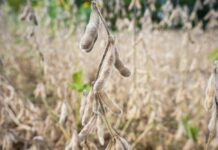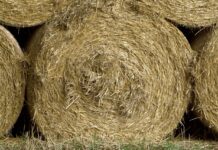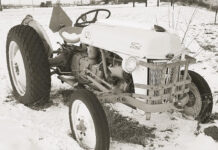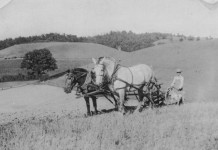I admit it is quite easy for me to get spring fever. With the dreary, gray winter and roller coaster of freezing weather, once a few days of warmth and sunshine appear, I just want to be outside and think of cleaning and planting in my flower beds around the yard. I know spring is a time of renewal, but I also have learned patience is a virtue.
So, before you go and reach for the rake and pruning shears, consider waiting. By doing an early yard cleanup, you could inadvertently wipe out an entire generation of native pollinators. While a tidy landscape may be visually appealing, those seemingly lifeless stems and leaf piles are teeming with life — critical life that supports ecosystems and food production.
The hidden residents in your “messy” yard
Most people don’t realize that 80% of native bees nest in dead plant stems. Each stem can house up to 20 pollinator larvae, which spend six months developing before emerging as fully formed bees. When gardeners remove stems and clear leaf litter too soon, they unknowingly destroy these valuable pollinators before they even have a chance to hatch.
Beyond bees, leaf cutter bees, mason bees, native wasps and other beneficial insects also rely on these natural habitats to complete their life cycles. Butterflies and moths, such as swallowtails, fritillaries and the luna moth usually overwinter in chrysalises, cleverly blending in with leaves and dead stalks in the garden and wild areas. Fireflies hide in leaf litter or create burrows underground and stay within an inch or two of the surface. These species play a pivotal role in pollination, plant reproduction and pest control and add value to our lives.
Mason bees: The unsung pollination champions
While honeybees often receive the most recognition, solitary bees and especially mason bees are actually the number one pollinator in many ecosystems. Unlike honeybees, mason bees do not live in hives; instead, they nest in small cavities, including hollow plant stems and wood crevices. Additionally, around 70% of native bee species, including many mason bees, live in the ground. These bees are solitary and far more efficient pollinators than honeybees, pollinating up to 95% of the flowers they visit, compared to honeybees’ 5% pollination rate per visit. Research suggests that native bees provide up to $2,000 worth of pollination services per yard.
This natural labor force ensures robust gardens, increased crop yields and thriving native plants — all at no cost to homeowners.
How to help protect pollinators
Understanding the importance of preserving native pollinators is the first step in helping to protect them. The second step is adjusting your yard care habits to accommodate their needs.
Here’s how you can help our pollinator friends:
1. Delay cleanup until warmer weather. Native bees and other pollinators remain dormant in plant stems and leaf litter until temperatures consistently reach 50 F. Premature cleaning disrupts their development and can significantly impact bee populations.
By waiting until May to tidy up your garden, you give these pollinators the time they need to emerge naturally. Yes, procrastination does have its rewards, think of it that way.
2. Maintain critical habitat areas. Consider designating parts of your yard as “pollinator sanctuaries.” These spaces should include hollow plant stems, leaf litter piles, standing perennials and seed heads. By preserving these elements, you ensure that pollinators have safe spaces to grow and thrive.
3. Modify your cleanup techniques. Instead of discarding plant stems and other organic material, bundle and store cut stems in an undisturbed corner of your yard. This allows pollinator larvae to continue their development while keeping your landscape managed.
4. Create brush piles. Brush piles provide additional shelter for a variety of insects and small animals. These areas serve as nesting and overwintering sites, adding to the biodiversity of your yard.
5. Educate. A single pollinator-friendly yard can make a difference, but a neighborhood-wide effort can have an even greater impact. Share your knowledge with neighbors or friends, explain the importance of delaying cleanup and encourage them to take similar steps to protect local pollinator populations.
Embrace the beauty of a thriving ecosystem
I know I might have some convincing to do, but a “messy” yard is not a neglected one — it’s a thriving ecosystem supporting vital pollinators. By making small adjustments to your yard care routine, you play an essential role in preserving biodiversity, protecting native bee populations and ensuring a flourishing natural environment for future generations.
This spring, instead of rushing to clean up, take a step back and let nature take its course — your garden and the pollinators it supports will thank you for it. I want to personally thank the Norwayne FFA Vo-Ag teacher, Ms. VanTyne, for sparking the idea about this article and reminding me that mason bees are important pollinators. Thanks to all educators!














Readers might also consider “putting up with” the first flower of the season,
and not reach for a weed killer.What flower is that? The dandelion.A lawn filled
with dandelion blooms is a true harbinger of Spring,and pollinators are appreciative.Those first days after they emerge from cocoons are critical to survival.
Very nice article.